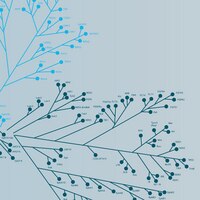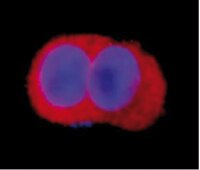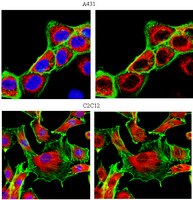14-173M Sigma-AldrichMAP Kinase 2/Erk2 Protein, active, mouse, 250 µg
Active, N-terminal GST-tagged, recombinant MAP Kinase 2, expressed in E. coli cells, activated using MEK1. For use in Kinase Assays.
More>> Active, N-terminal GST-tagged, recombinant MAP Kinase 2, expressed in E. coli cells, activated using MEK1. For use in Kinase Assays. Less<<Recommended Products
Overview
| Replacement Information |
|---|
| References |
|---|
| Product Information | |
|---|---|
| Presentation | 50mM Tris-HCl, pH 7.5, 150mM NaCl, 0.1mM EGTA, 0.03% Brij-35, 50% glycerol, 1mM benzamidine, 0.2mM PMSF, 0.1% 2-mercaptoethanol. |
| Quality Level | MQ100 |
| Applications | |
|---|---|
| Application | Active, N-terminal GST-tagged, recombinant MAP Kinase 2, expressed in E. coli cells, activated using MEK1. For use in Kinase Assays. |
| Key Applications |
|
| Physicochemical Information |
|---|
| Dimensions |
|---|
| Materials Information |
|---|
| Toxicological Information |
|---|
| Safety Information according to GHS |
|---|
| Safety Information |
|---|
| Storage and Shipping Information | |
|---|---|
| Storage Conditions | Store in undiluted aliquots at -20°C for up to one year from the date of receipt. Avoid repeatede freeze-thaw cycles. |
| Packaging Information | |
|---|---|
| Material Size | 250 µg |
| Material Package | Also available in 10 μg size (cat#14-173) and in bulk (cat# 14-173-K). |
| Transport Information |
|---|
| Supplemental Information |
|---|
| Specifications |
|---|
| Global Trade Item Number | |
|---|---|
| Catalogue Number | GTIN |
| 14-173M | 04053252362149 |
Documentation
MAP Kinase 2/Erk2 Protein, active, mouse, 250 µg SDS
| Title |
|---|
MAP Kinase 2/Erk2 Protein, active, mouse, 250 µg Certificates of Analysis
| Title | Lot Number |
|---|---|
| MAP Kinase 2, active - D8KN012U-D | D8KN012U-D |










